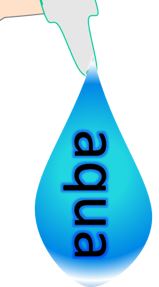How can we TREAT Dry Eye ? ...
THERAPY 1 - OPTIONS in Dry Eye Disease
The THERAPY of DRY EYE DISEASE has often proven to be difficult and unsatisfactory for the patient as well as for the clinician. This is due to many factors, among which is an INCOMPLETE UNDERSTANDING of Dry Eye Disease that still requires more intense research and education activities.
However in recent years we already have a better understanding of the disease process and better diagnostic and therapeutic means as explained in the HOLISTIC DYNAMIC CONCEPT of DRY EYE DISEASE on this homepage of the OSCB.
With the awareness that MEIBOMIAN GLAND DYSFUNCTION (MGD) is the primary causative factor in the majority of Dry Eye patients and with the knowledge that MGD is mainly based on an obstructive process (as explained in the section for ´MGD´) we have a totally new approach for Dry Eye Disease at hands - which is PHYSICAL THERAPY.
In contrast to all previous therapies, physical therapy offers a causative therapy approach, or at least a semi-causative therapy, and can also have a preventive aspect, because timely diagnosis and therapy of the gland obstruction can conceivably prevent further damage to the Meibomian glands.
There are some main SIGNS & SYMPTOMS in Dry Eye Disease that need to be evaluated in the DIAGNOSTIC process and then lead to some main THERAPY PRINCIPLES.
Most sense makes a STRATIFIED THERAPY that goes along the increasing severity of disease
This is certainly a principle medical approach and not specific for Dry Eye.
The basic therapy options are applied according to an increasing severity of disease with increasingly specific and ´invasive´therapy options.
A stratified approach for Dry Eye Disease typically includes:
INFORMATION of the patient
so that she or he is able to understand the disease and assist in the therapy
=> INSIGHT - be informed
Improvement or removal of known RISK FACTORS
THERAPY: Avoidance/ Minimization of Desiccating Environments
Identification and correction of different types of TEAR FILM DEFICIENCY
by supplementation and/ or by causative therapy, if possible, as e.g. in MGD
Specific Tear Supplementation
A factor of utmost importance is, that tear supplements should NOT contain Preservatives because basically all of them act more or less destructive on the ocular surface tissues. After some decades of research , this is eventually sufficiently known and respected and nowadays, many supplements are luckily available in a preservative-free form that uses either disposable single-dose containers or multi-dose containers with refined techniques to keep the content of the container free of microbial infection.
Physical Therapy
is a new and promising therapy option
In cases that are non-responsive to the above therapy it should be proceeded to:
More SPECIFIC THERAPY of Specific PHENOMENA such as inflammation, increased bacterial colonization etc. or potential underlying systemic disease.
THERAPY e.g.:
Anti-Inflammatory therapy
Antibiotic Therapy
Scleral Contact Lenses
Consider Scleral Contact Lenses in severe disease for Re-constitution of a ´moist & irritation free´ ocular surface environment,
Established and novel therapy options for Dry Eye Disease should generally be chosen according to the pathophysiology in the individual patient.
For severe Dry Eye Disease and associated systemic diseases the consultation of specialized Dry Eye Centers and Specialists of Dermatology, Rheumatology/ Immunology, or Gynecology/ Endocrinology is generally recommended.
INFORMATION is KEY
One important PRE-REQUISITE is, that not only the clinician but also the patient understands the dry eye condition and particularly the factors that apply specifically to her or him. This is one major aim of this homepage of the Ocular Surface Center Berlin (OSCB).
The patient will the be better prepared to assist in the clinical care which is important for a successful therapy ... and this will also give her/him the ´patience´, that comes best out of own understanding, to know that even a suitable and effective therapy will take time until is works sufficiently.
Subjective Symptoms typically arise when the ocular surface tissue is affected or even wounded in a way that leads to activation of afferent nerves which transmit the information of ´something wrong´ to the central nervous system.
When this is caused by simple activation of free nerve endings by e.g. hyper-osmolarity or acute mechanical friction - respective therapy such as removal of the stimulus and/or suitable tear supplementation may immediately resolve the situation.
When some degree of tissue activation and wounding of the surface epithelial cell has occurred even a suitable therapy - which is based on the identification and removal of the noxious stimulus and tear substitution - will take some time until a sufficient relief is noticed by the patient.
Everybody may know that pain and irritation even by a simple dust foreign body will often not be immediately be fully relieved after its removal.
Wounding to the tissue certainly requires sufficient time for healing until full relief of symptoms may be expected.




























